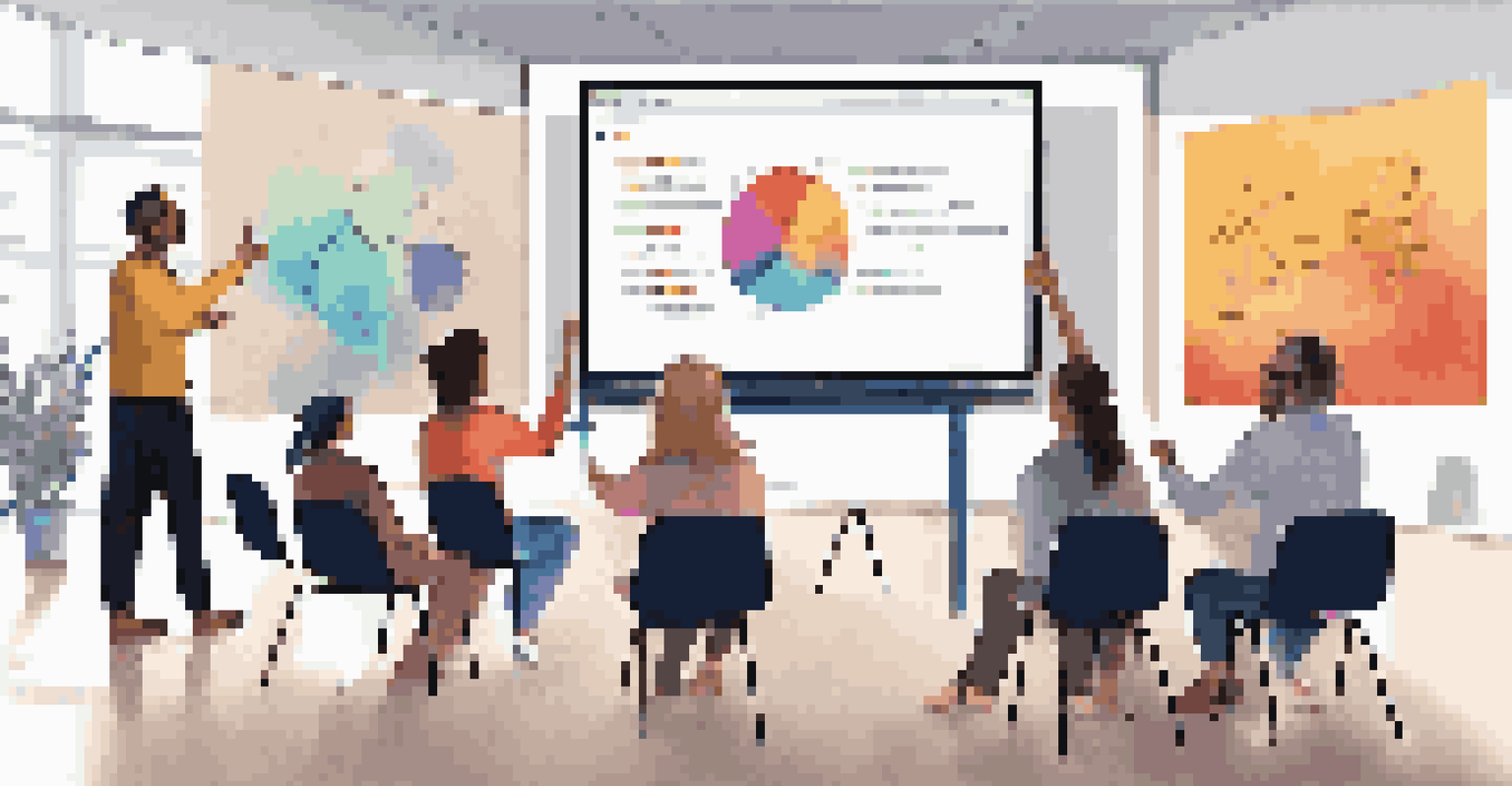Best Practices for Conducting Innovation Workshops Effectively

Set Clear Objectives to Guide Your Workshop
Before diving into the workshop, it's crucial to establish clear objectives. These goals act as a roadmap, guiding participants towards meaningful outcomes. Whether you want to generate new ideas or solve specific problems, having defined objectives ensures everyone is on the same page.
Diversity is the engine of innovation. It generates new ideas and solutions that can lead to better outcomes.
Communicating these goals at the start sets the tone and gives participants a sense of purpose. This clarity helps foster engagement, as attendees understand what they are working towards. It also allows for better evaluation of the workshop's success afterward.
Remember, the clearer the objectives, the more focused the discussions will be. Participants can then channel their creativity and brainstorm effectively, leading to innovative solutions that align with the workshop’s aims.
Create a Diverse and Inclusive Participant Group
Diversity is a key ingredient in any successful innovation workshop. By bringing together individuals with different backgrounds, experiences, and perspectives, you're more likely to spark creativity and innovative thinking. A mix of skills and viewpoints can lead to fresh ideas that might not emerge in a homogeneous group.

Inclusion is just as important as diversity. Make sure every participant feels valued and encouraged to share their thoughts. This can be achieved by fostering a supportive environment where all voices are heard, which helps to generate a wider range of ideas and solutions.
Establish Clear Workshop Goals
Setting clear objectives at the start ensures participants are aligned and focused, leading to more effective outcomes.
Consider using icebreakers or team-building exercises to help participants feel comfortable with one another. When people connect on a personal level, they are often more willing to share their insights, resulting in richer discussions and outcomes.
Utilize Effective Facilitation Techniques
A skilled facilitator can make all the difference in an innovation workshop. They guide discussions, keep the group focused, and ensure that all voices are heard. A good facilitator also knows how to read the room and adapt their approach based on the group's dynamics.
The best way to predict the future is to create it.
Incorporating various facilitation techniques, such as brainstorming sessions, breakout groups, or role-playing exercises, can keep the energy high and encourage participation. Each technique can help unlock different facets of creativity, making the workshop more dynamic and engaging.
Don't underestimate the power of humor and lightness in facilitation. A relaxed atmosphere can lead to more open sharing of ideas, making it easier for participants to think outside the box and engage in innovative thinking.
Incorporate Interactive and Hands-On Activities
Engagement is key in innovation workshops, and interactive activities can significantly enhance this. Incorporating hands-on exercises, such as design thinking activities or prototyping sessions, allows participants to put their ideas into action. This not only makes the workshop more enjoyable but also facilitates deeper learning and understanding.
Using tools like sticky notes, whiteboards, or digital collaboration platforms can encourage active participation. These tools can help visualize ideas, making it easier for participants to build on one another's thoughts and develop concepts collaboratively.
Foster Diversity and Inclusion
A diverse participant group encourages innovative thinking, as different perspectives can lead to richer discussions and ideas.
Ultimately, when participants are actively involved rather than just passive listeners, they are more likely to feel invested in the outcomes. This hands-on approach helps create a sense of ownership over the ideas generated during the workshop.
Allocate Adequate Time for Discussion and Reflection
While it's important to keep the workshop moving, adequate time for discussion and reflection is equally critical. Participants need space to process their thoughts, share ideas, and refine them collaboratively. Rushing through discussions can lead to missed opportunities for deeper insights and more innovative solutions.
Encourage participants to ask questions and explore ideas further. This not only helps clarify thoughts but also sparks additional creativity as different viewpoints are considered. Reflection time can also be incorporated through group discussions or individual quiet time to think.
By allowing for these moments of pause, you're creating an environment that values thoughtfulness, leading to more robust and well-rounded ideas. Participants will appreciate the chance to dive deeper into discussions and feel more satisfied with the outcomes.
Document Ideas and Outcomes for Future Reference
One of the most vital practices during an innovation workshop is documenting ideas and outcomes. This ensures that no valuable insights are lost and provides a reference point for follow-up actions. Consider assigning someone to take notes or using digital tools that allow for real-time documentation.
Capturing ideas as they emerge not only keeps participants engaged but also helps to visualize the collective thinking process. This documentation can serve as a foundation for subsequent meetings or projects, allowing teams to build on the momentum generated during the workshop.
Engage with Hands-On Activities
Incorporating interactive and hands-on exercises keeps participants engaged and invested in the workshop outcomes.
Furthermore, sharing the documented outcomes with all participants after the workshop reinforces the collaborative effort and encourages continued engagement. It also shows that every contribution is valued and has a place in the larger innovation journey.
Follow Up to Maintain Momentum and Engagement
After the workshop concludes, the journey shouldn't end there. Following up with participants is crucial for maintaining momentum and building on the ideas generated. This can involve sending out a summary of the workshop, along with key takeaways and next steps.
Encouraging ongoing dialogue through regular check-ins or creating a shared platform for further discussions can help keep the energy alive. This shows participants that their contributions are valued and gives them a chance to see how their ideas evolve into actionable plans.

In essence, follow-up communication reinforces the collaborative spirit of the workshop and keeps participants engaged in the innovation process. It helps to turn initial ideas into tangible outcomes and fosters a culture of continuous improvement.